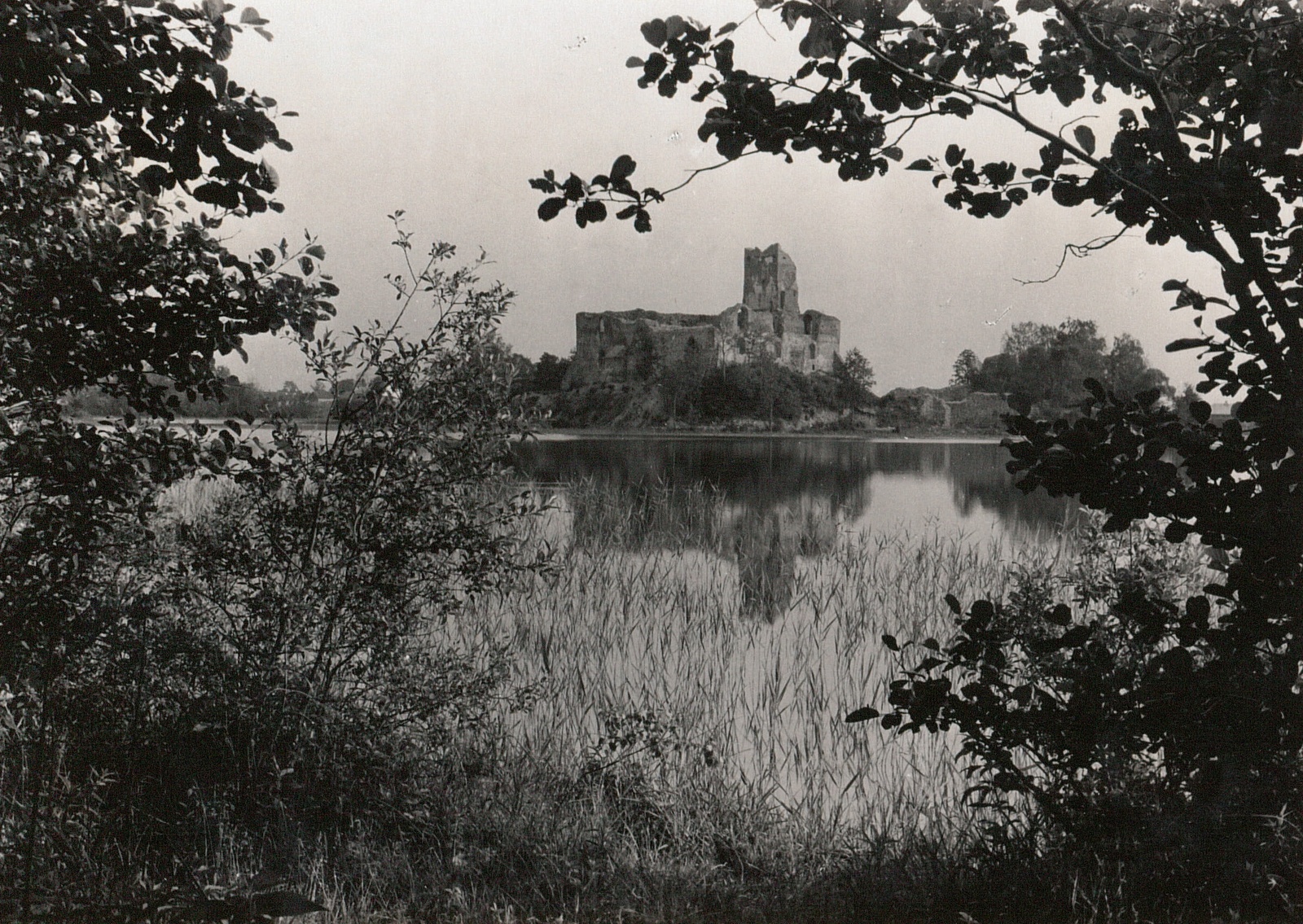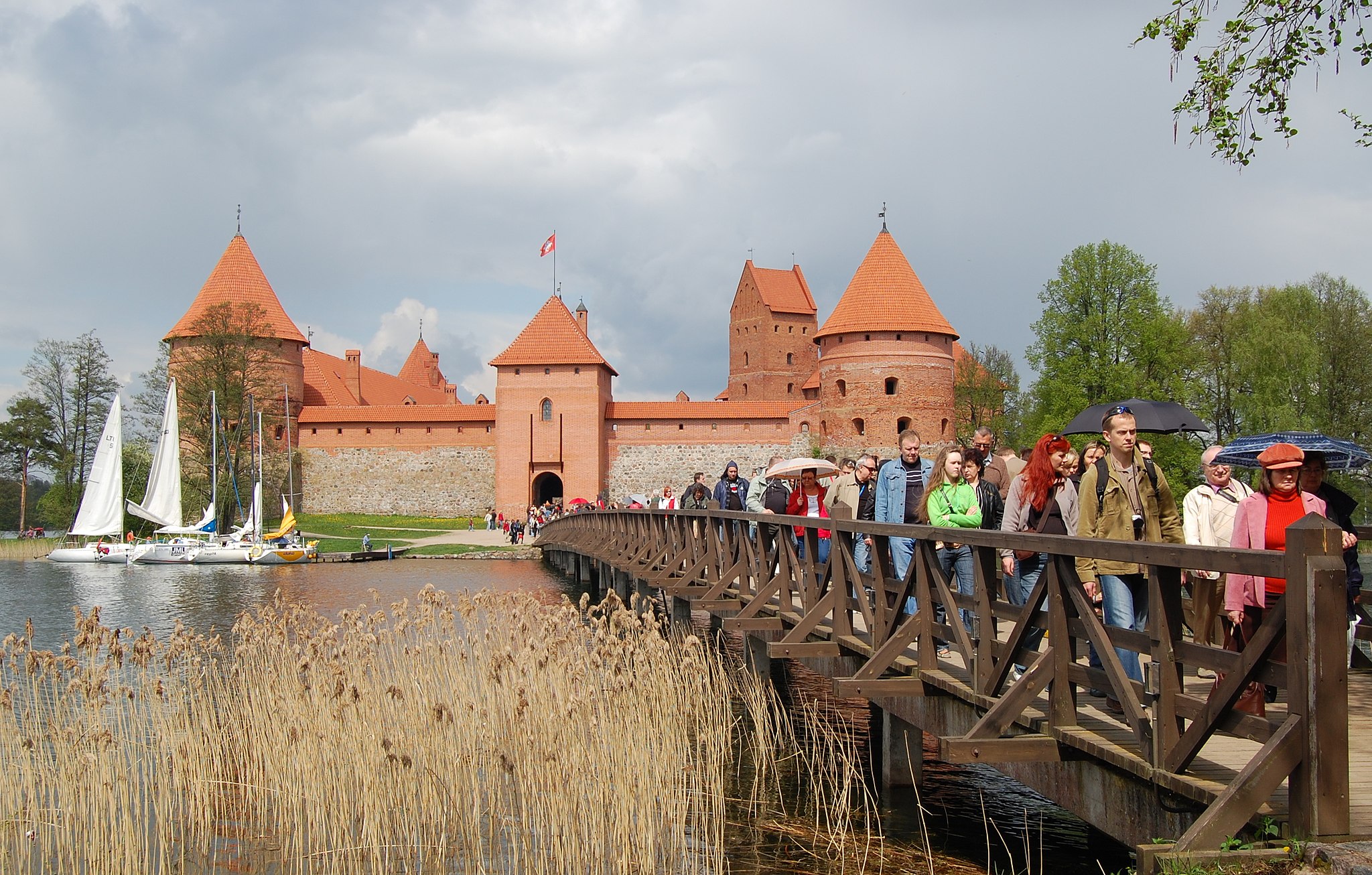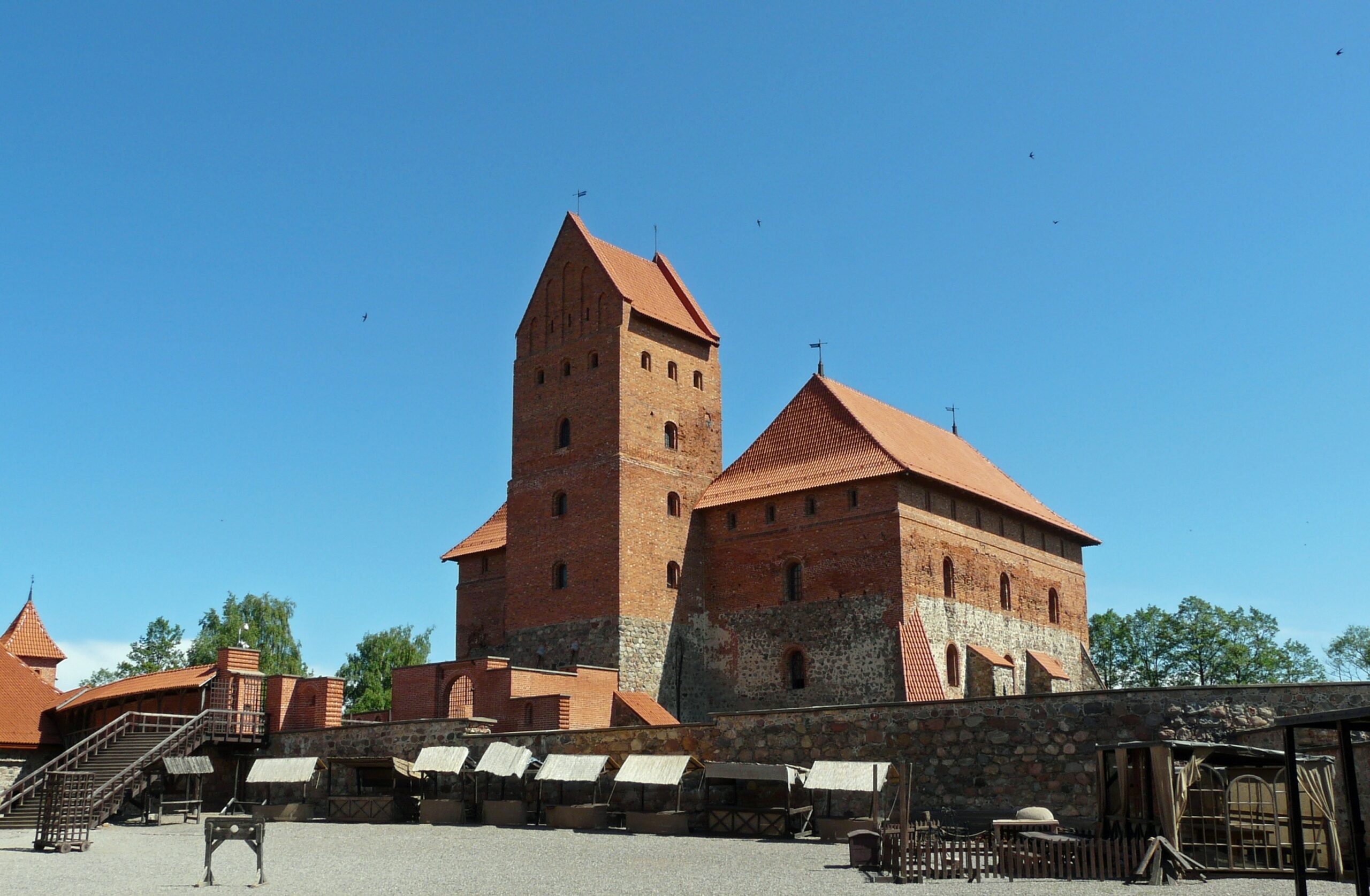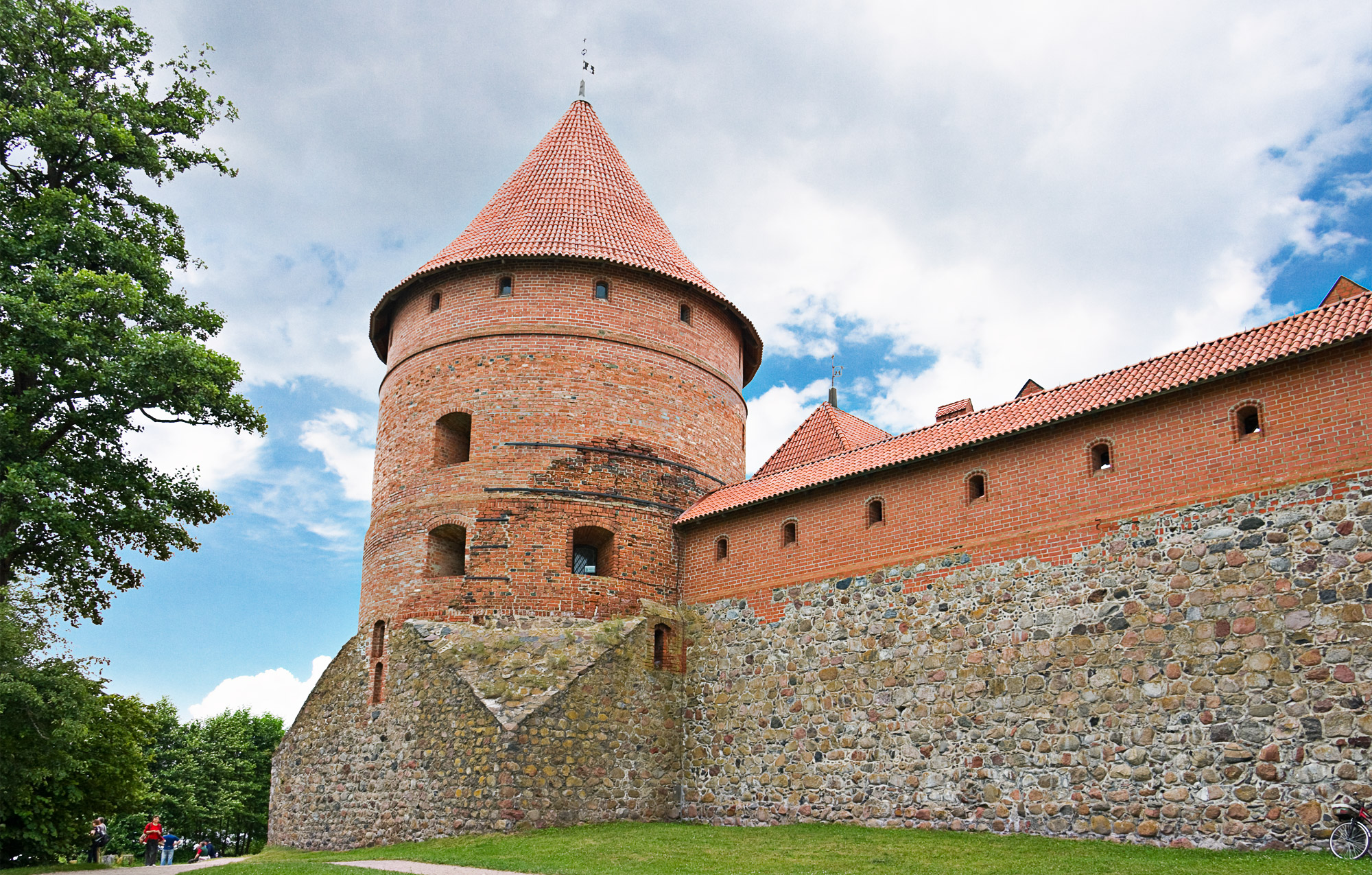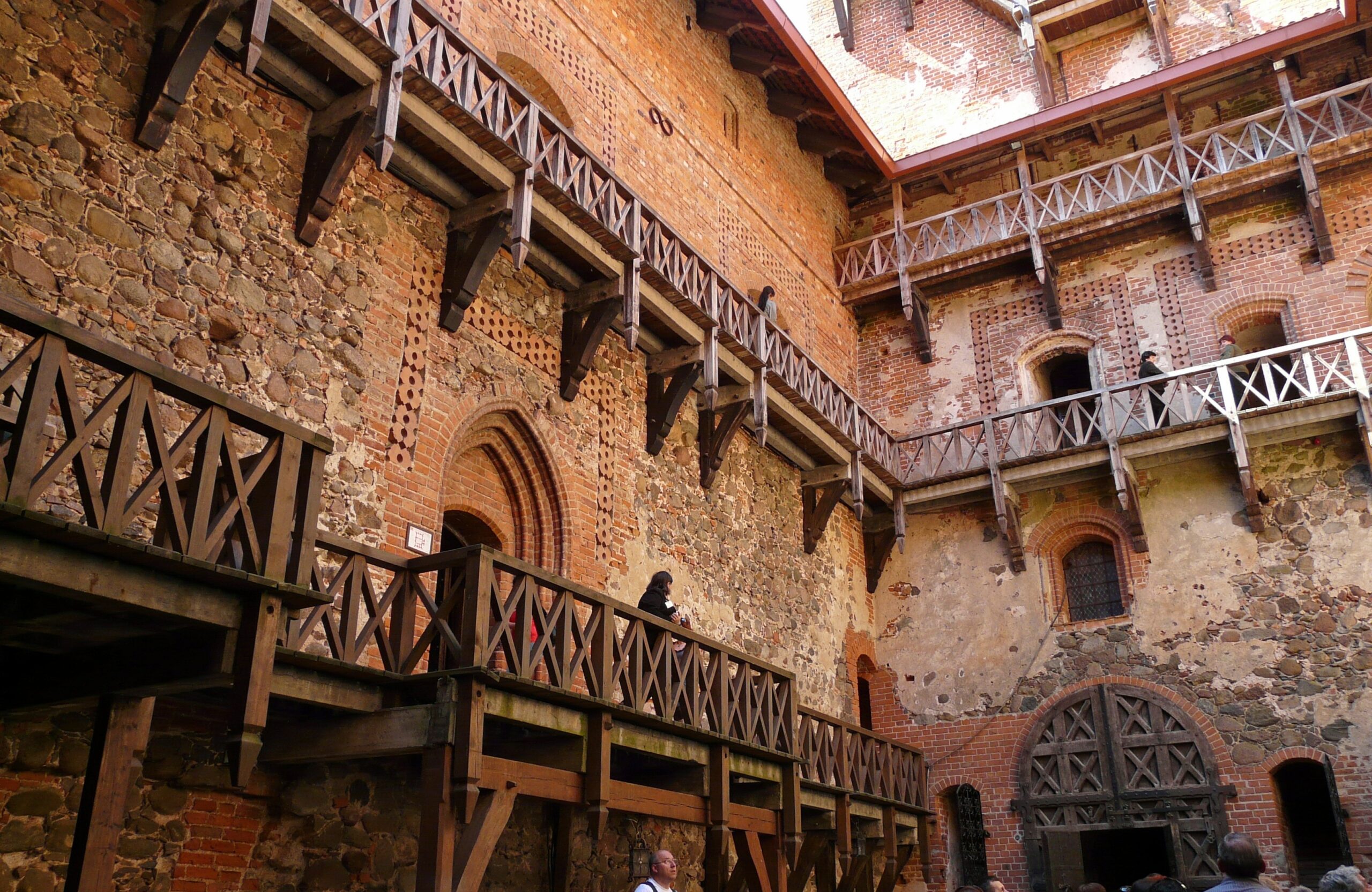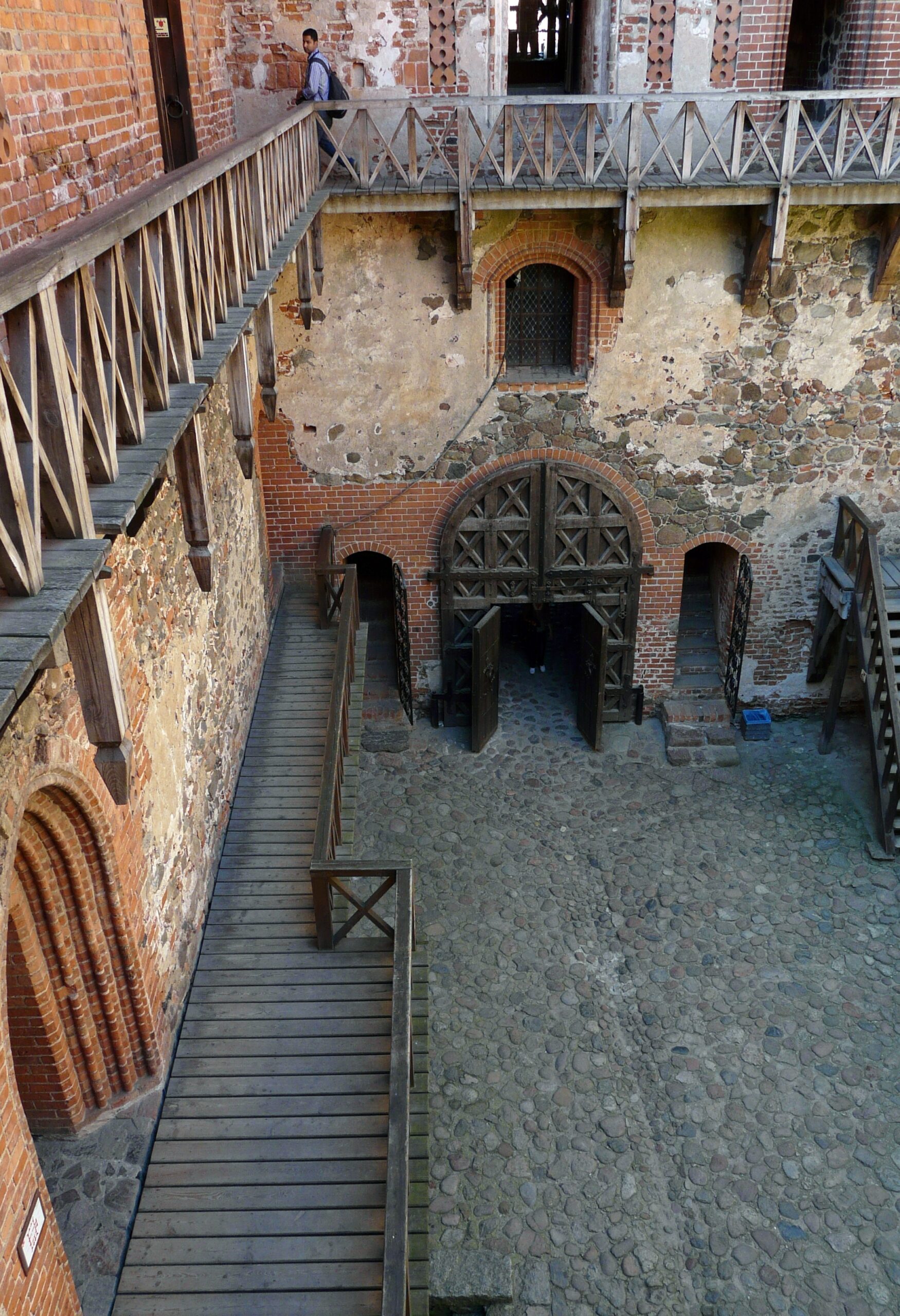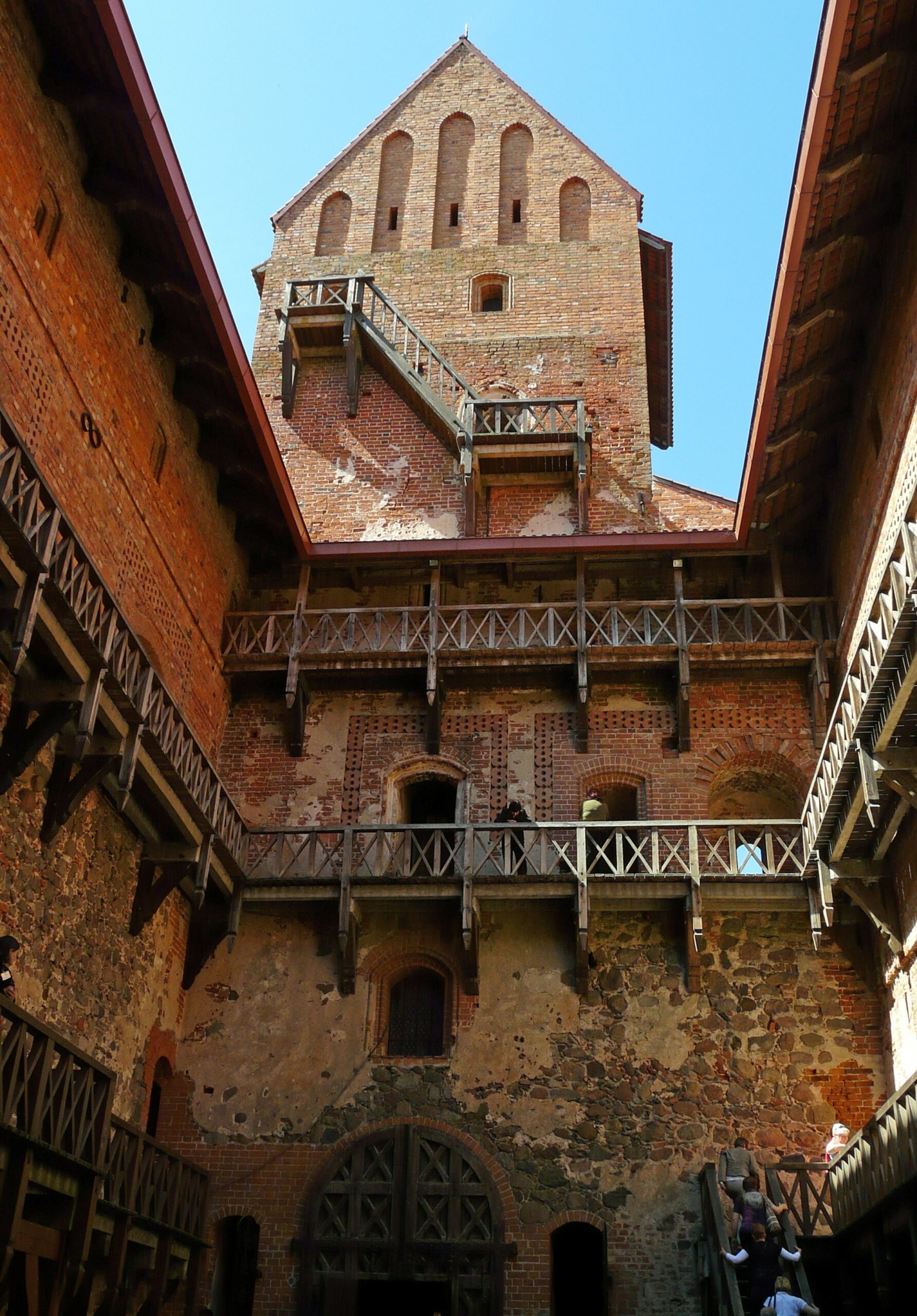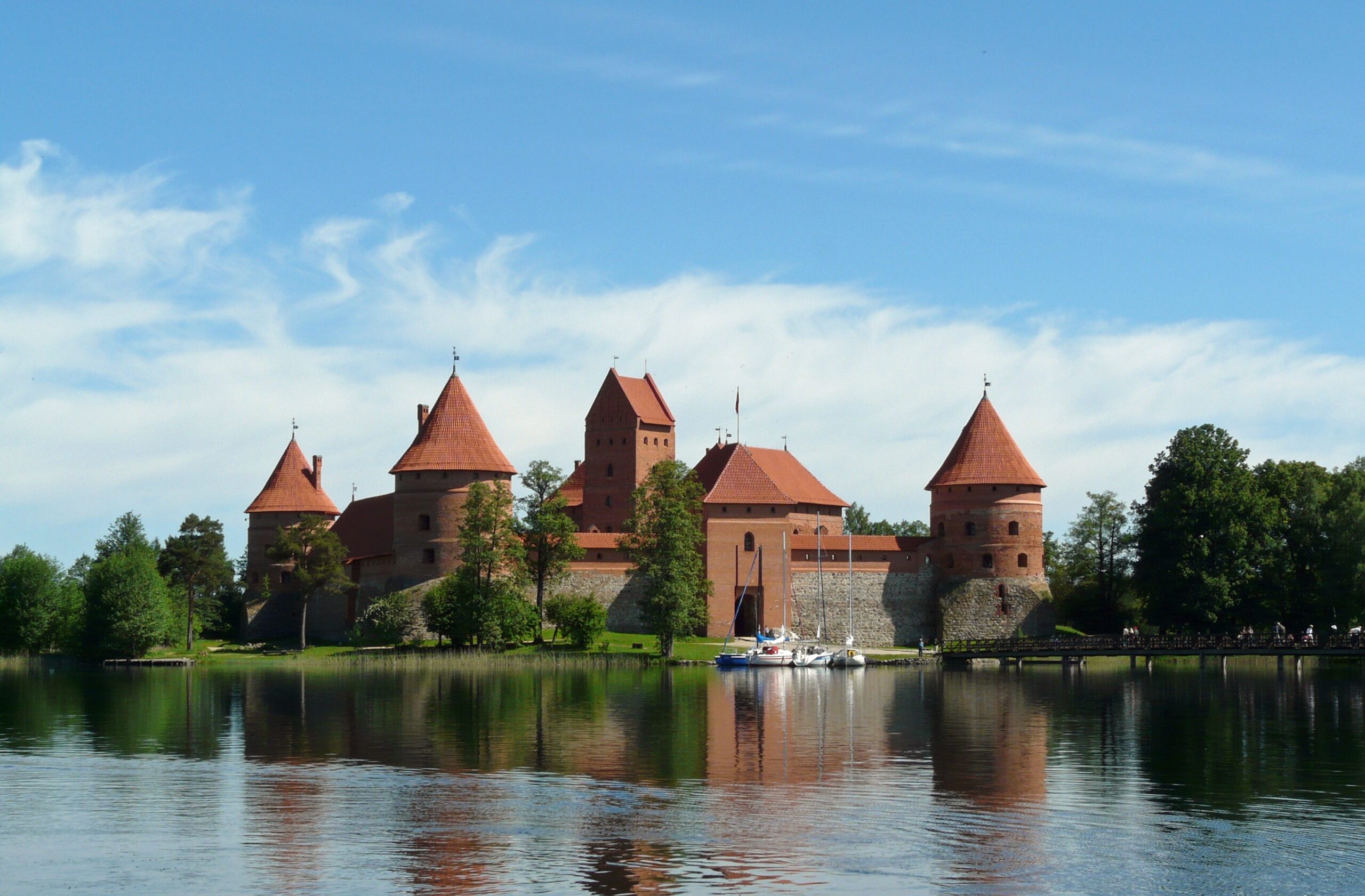Trakai Castle is the most important of all the sights in the town, which lies less than 30 km from Vilnius. It is the largest fortress in Lithuania and the only one of its kind in Eastern Europe located on a lake island. The building attracts crowds of tourists to Trakai every year, who want to see the picturesquely situated Gothic castle
The first castle in Trakai was built in the mid-14th century by Kiejstut, who established the capital of his principality there by building a brick castle on the peninsula of Lake Galvė. After the founder’s death, the fortress was the arena of a power struggle between Jogaila and Vytautas. The castle was also raided by the Teutonic Knights. Eventually, the building was taken over by Ladislaus Jagiello
Trakai castle. Photo: Dudva, CC BY-SA 3.0, via Wikimedia Commons
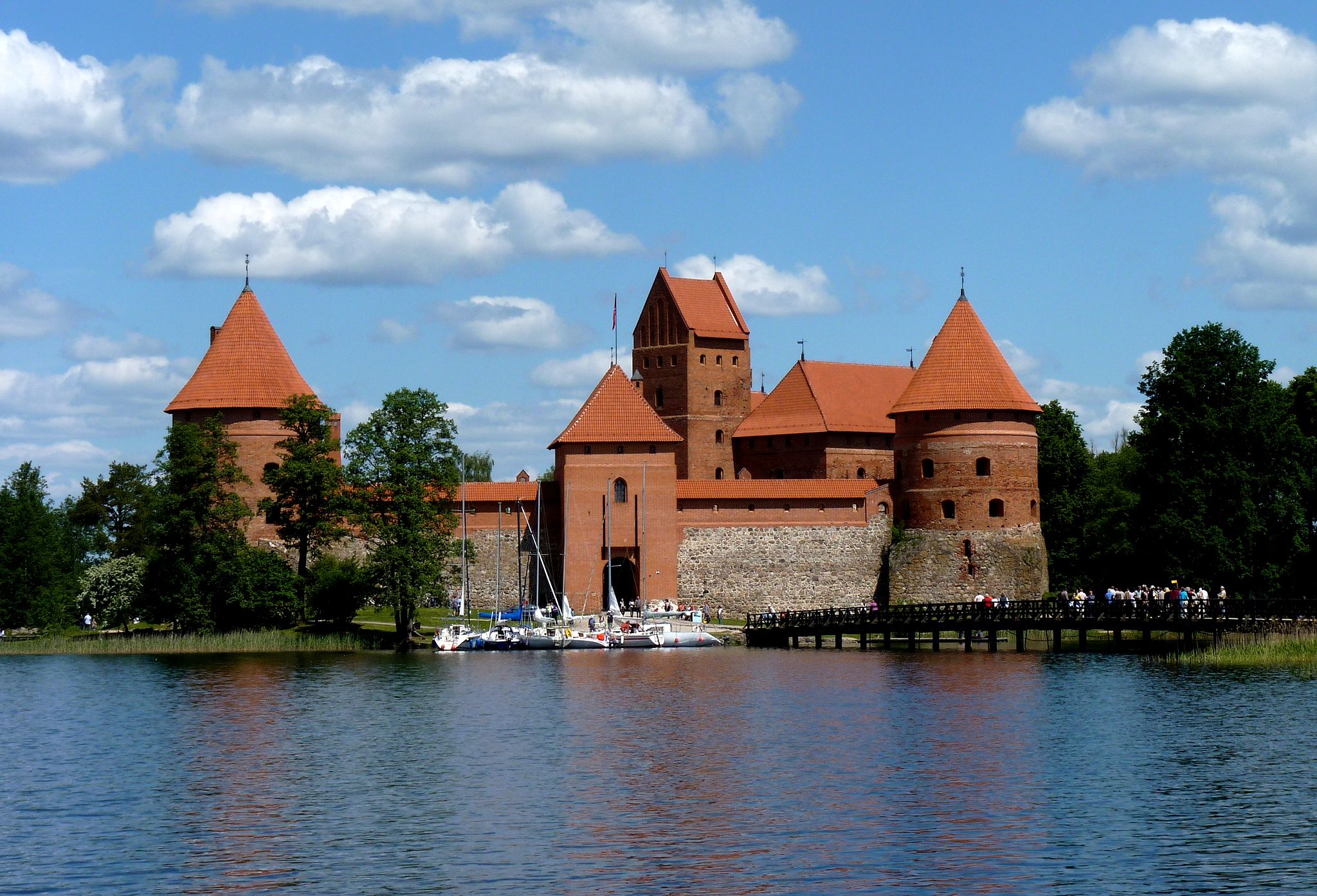
The castle on the largest of the three islands in Lake Galva was ordered to be built by Grand Duke Vytautas in 1404-1408. The stronghold was to support the earlier Trakai castle located on the peninsula. Two wings and a 35-metre-high donjon were built, which housed a chapel and some living quarters. The most important element of the castle structure became the quadrilateral ducal palace with an inner courtyard surrounded by wooden galleries. The second phase of the expansion used mainly red brick, not stone as before. Its decoration was modest – limited to glazed bricks and stained glass in the windows. The building was kept in the Gothic style. The third phase was mainly work on modernising and strengthening the defences of the building. Trakai Castle lost its military significance soon after the Battle of Grunwald, when the main enemy of the Grand Duchy of Lithuania was defeated by the Polish-Lithuanian army. The former fortress was transformed into a ducal residence. Under Sigismund the Old and Sigismund Augustus, the building was rebuilt in Renaissance style and underwent further adaptations to become a summer residence. It was ruined during the wars with Moscow, and reconstruction was abandoned
Mid-19th century, ruins of Trakai castle. Source: Digital National Library Polon, by Julian Cegliński
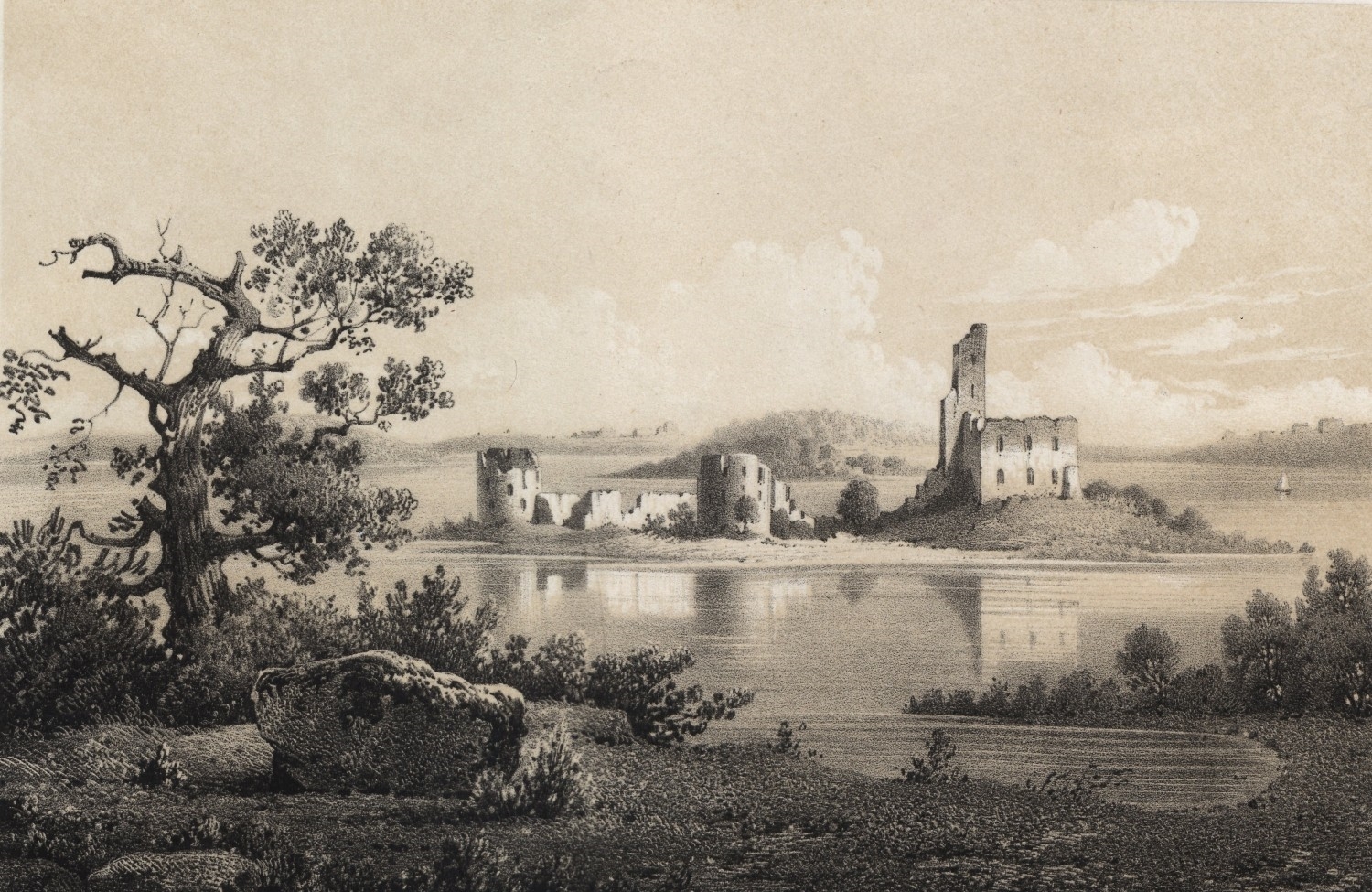
In the 19th century, the first plans to reconstruct the castle were made. In 1888 the Imperial Archaeological Commission documented the remains of the building, and in 1905 the Tsarist authorities decided to conserve and partially restore the ruins. After the First World War, Trakai found itself on the territory of the Second Polish Republic. The work was started by the Polish conservator Stanisław Lorentz after a visit to the castle in May 1929, during which it was decided that there was an immediate need to take action to preserve the remains of the building. The first work was carried out in 1929-1930. After Lorentz stepped down as conservator, his successors changed the scope of the work and began reconstruction work. The reconstruction plan was prepared and supervised by the architect Jan Borowski, with the cooperation of Professor Juliusz Kłos. After World War II, the work was continued in stages by the Lithuanians. The castle obtained its final form in 1984. After reconstruction, it represents the Gothic style (according to its presumed 15th century state)
In 1962, the castle was handed over to the Trakai Historical Museum. Historical exhibitions of the Grand Dukes of Lithuania, archaeological findings and artefacts are displayed there. Reconstructions of medieval battles are also held in the building. Trakai Castle is one of Lithuania’s most important tourist attractions
Source: budowle.pl, my-tuitam.pl
Read also: Architecture | Monument | History | Interesting facts | Travel



